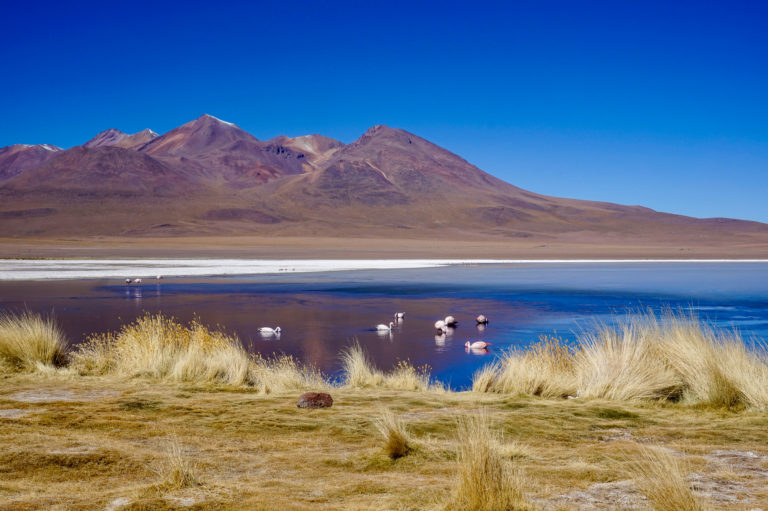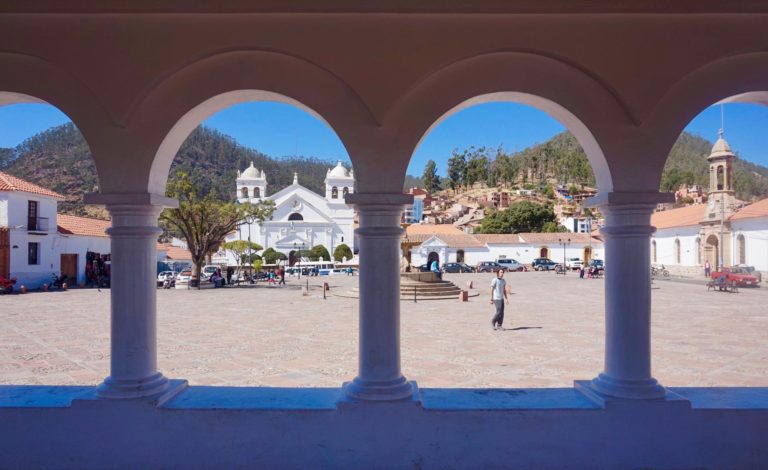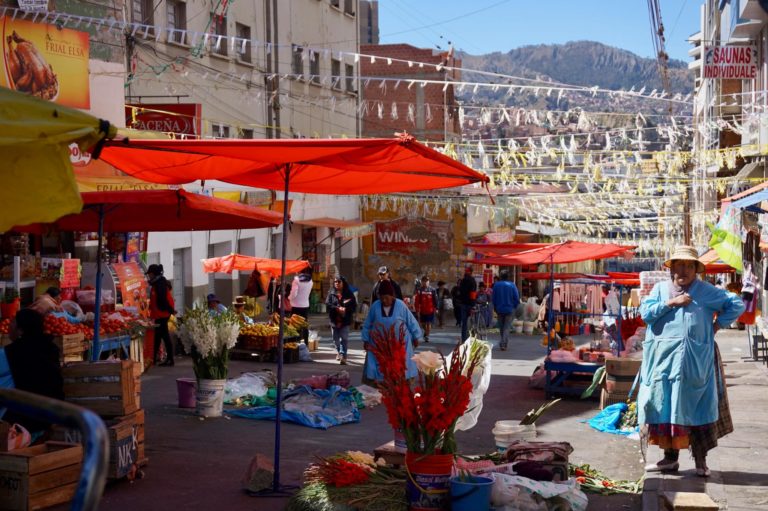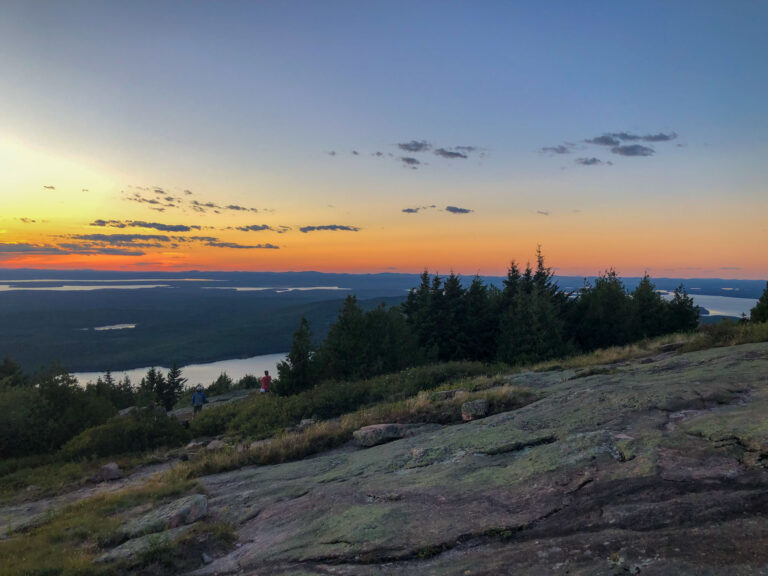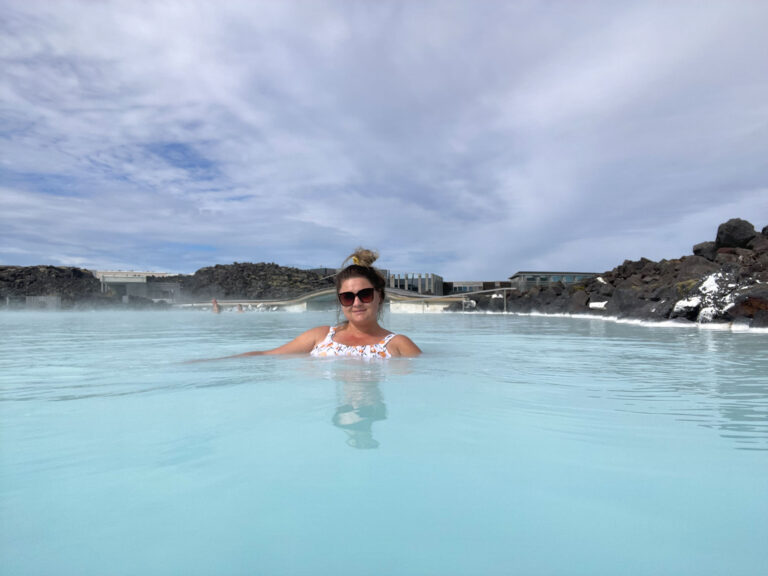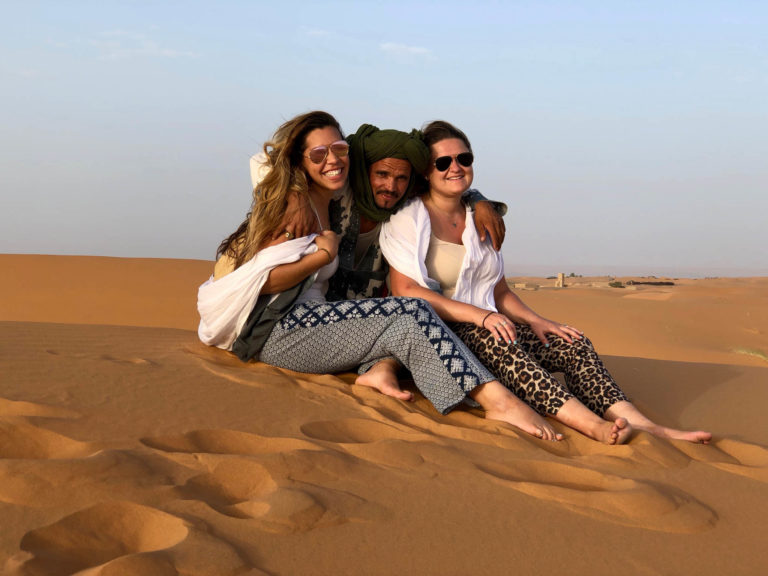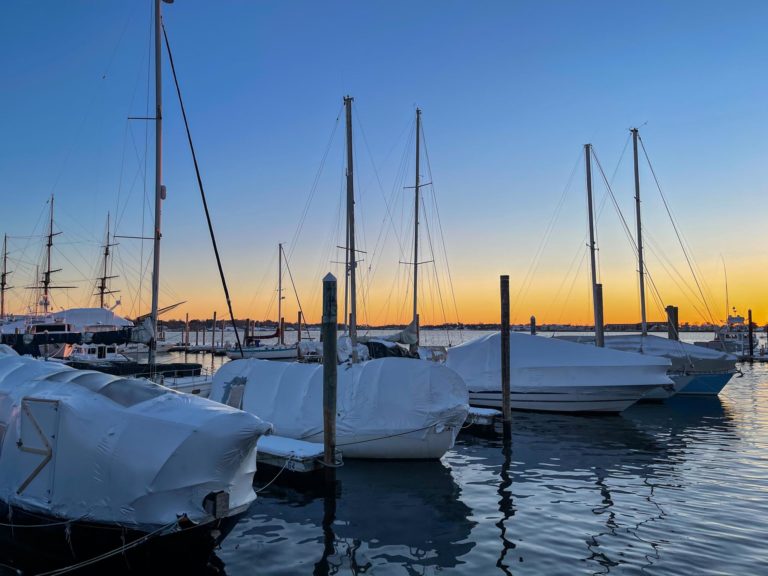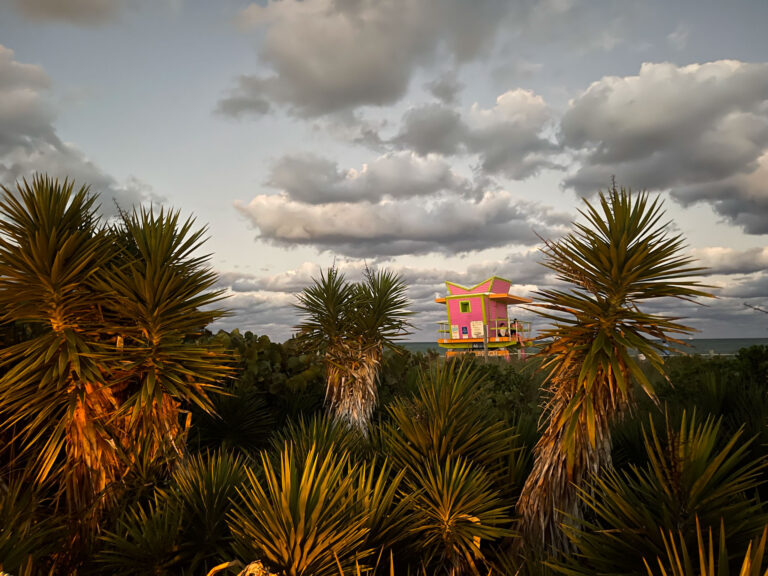Copacabana: Your Base To See Lake Titicaca & Isla del Sol in Bolivia
While visiting Bolivia, most first-time travelers primarily focus on seeing cities like La Paz or Uyuni. However, if you’re near La Paz and have an extra 2 days, I strongly suggest making your way over to these incredible locations of Lake Titicaca on the Bolivian side. Isla del Sol is a stunning island on the lake located a short boat ride away from Copacabana, Bolivia. Each location has its own character and I am here to tell you the best way to visit them both.
There is no visiting Isla del Sol without stopping at Copacabana, and there is no real point in getting yourself all the way to Copacabana without going out to explore Isla del Sol. These two go hand in hand so why not tell you, all you need to know in one post. Isla del Sol is located on Lake Titicaca and Copacabana lies at its edge. Both are truly remarkable places because of their locations. Life is slow, beers taste 10x better and you won’t find swarms of tourists.
Below you’ll find all the logistics needed to travel there, must-see places, and most importantly, downloadable itineraries for your stay. As always, this post will try to cover the basics of everything you need to know about traveling there, perfect things to see, and things I wish I knew.
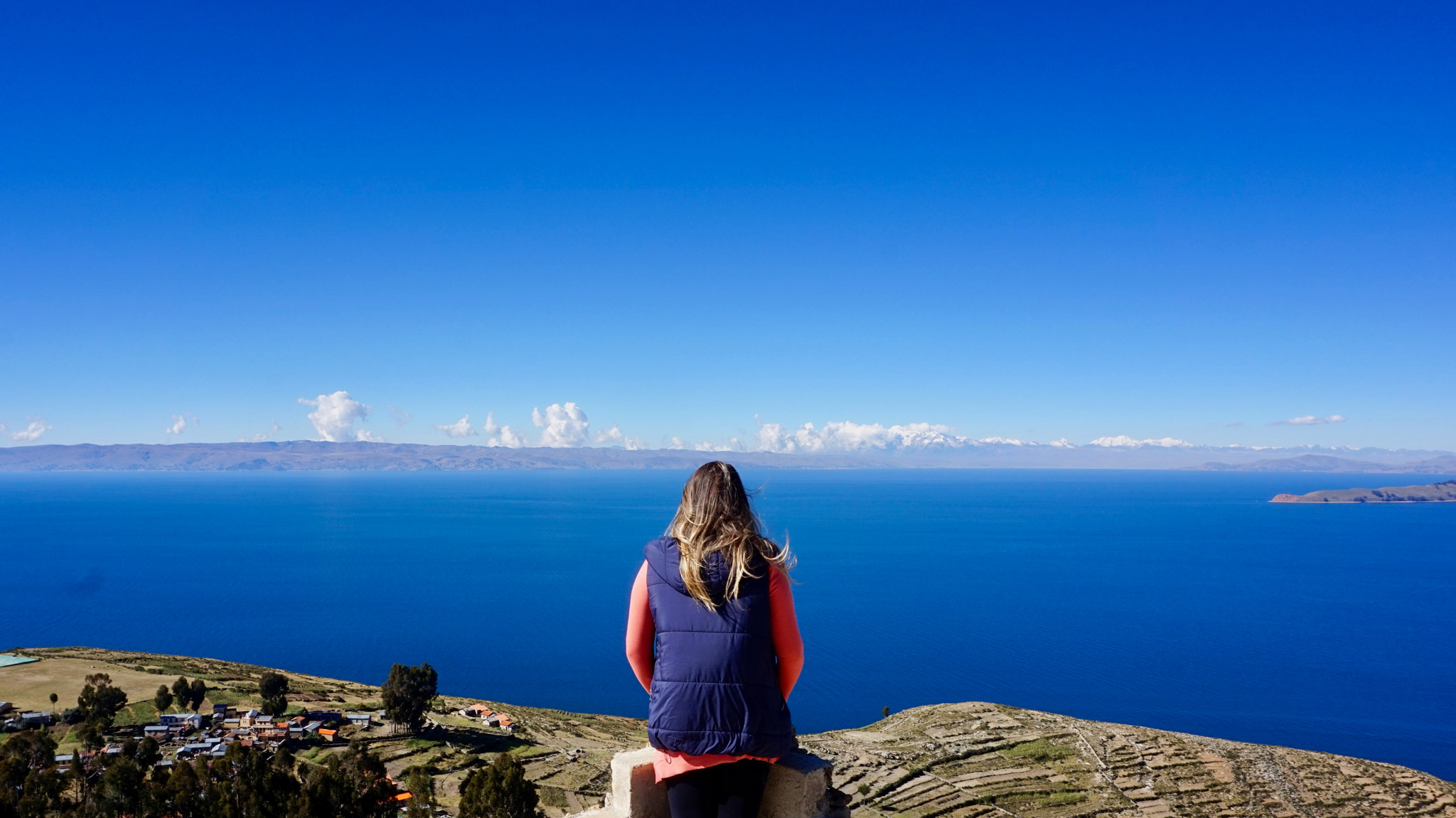
Let’s get to the logistics
Lake Titicaca, Bolivia is simply incredible. The rich blue water along with mountain views make this a crazy beautiful destination. Most that visit, see this lake from the other inside in Puno, Peru. Since I didn’t have a chance to see it there, I jumped on the opportunity when backpacking in Bolivia. To this day, I view this spot as one of the most unique destinations I have ever been to.
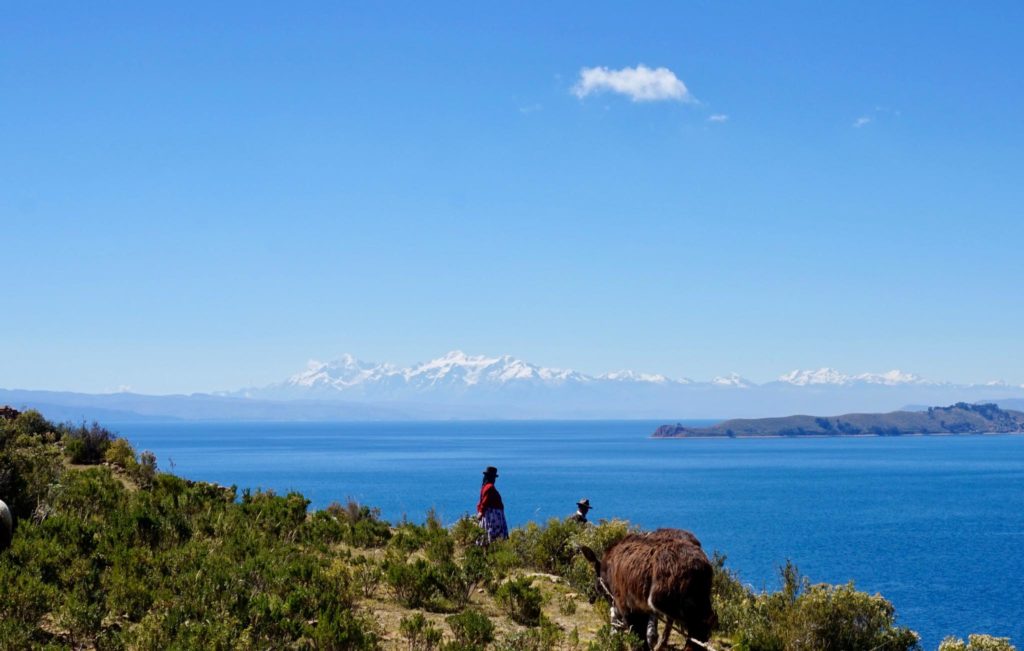
Before we dive into this part of the Bolivia itinerary, here is a reference for you of how I planned my 2 week trip to this incredible country:
- Flew into La Paz to take a bus into Copacabana and stayed there a night to acclimate.
- Then took a boat to Island del Sol on Lake Titicaca for an overnight stay.
- Returned to Copacabana to take a bus back to La Paz and stayed there for 4 days.
- Next stop from La Paz to Uyuni for 3 days.
- After the tour, I took an overnight bus to Sucre and stayed there for 4 days.
- My last stop was Santa Cruz to which I took a flight from Sucre. I stayed there for another 3 days.
Traveling there as a US citizen
While most countries don’t need a visa while traveling to Bolivia, the US relationship with the country made it mandatory to get one in the past. For that reason, it was quite rare to find many American travelers there. Obtaining a visa was fairly straightforward and I got one at the New York Bolivian embassy for a hefty fee of $160 USD.
Good news for you my fellow traveler, as of the 2020s and the change of presidents, US citizens are no longer required to get one.
Surviving high altitude
The city of Copacabana, Bolivia is located higher than La Paz, at over 12,600 feet. That is a crazy attitude for someone coming from sea level like myself. What happens at such high elevations, is that your body can no longer take in the same amount of oxygen per breath. This condition is called hypoxia. Having less available oxygen gives you a headache, confusion, lethargy and most annoyingly it’s hard to breathe too.
The first time I experienced pretty bad symptoms of altitude sickness was when I visited Cusco. I talk about this “horror” story here, so feel free to read it for some entertainment. When I was going to Bolivia, I wanted to be prepared so I researched ways to make this process less painful. I found out that you can take Acetazolamide or Diamox, a high blood pressure medication that can ease your symptoms of altitude sickness. I went to the doctor and got my prescription ready.
This is what it felt like for me: My doctor suggested starting the meds 3 days prior to arrival. After landing, I felt my head get a little heavy but not as bad as it did in Peru. My first stop was Copacabana and I was pretty ok throughout the day. At night, however, I got a headache that felt like my brain was about to explode. I cried because I thought it was my last day on earth, not kidding. To my surprise, I managed to fall asleep and woke up totally fine. After that, I did not have any more major issues while traveling the rest of Bolivia.
How to survive altitude sickness:
- Give yourself a day to do nothing and get your body used to the brutal altitude. Read a book, lay around and whatever you do, do not drink alcohol!
- Instead, drink tons and tons of water before and when you get there.
- If you know you will get sick based on prior experience, consider getting a prescription from your doctor for Acetazolamide or Diamox, a blood pressure medication that has a positive effect on altitude sickness. Its mechanism of action is believed to make your blood more acidic thus making oxygen stick to hemoglobin molecules in your blood a little better. I used it, and although it didn’t save me completely, it helped a lot compared to my experience in Cusco.
- If your symptoms get really bad, you can ask for oxygen at the hotel or you can descend to a lower altitude if possible.

Transport
To get to Copacabana from La Paz, you will need to take a bus from La Paz at the Cementary stop. If you’re landing in La Paz and want to go straight there since you’re already in El Alto that will save you an hour of extra travel. I decided to go to Copacabana first before going to La Paz and I am super happy with that route.
When I got off the plane, I went to the bus station, La Terminal Nueva de El Alto, hopped on the three-dollar, 4-hour local bus. I made friends with the local lady who fed me coca leaves to ease my altitude sickness. Most of them leave frequently but only when they fill up with enough people. They run until 6 pm or so. There are also tourist buses for about $7 that offer a little more comfort compared to the local one. I took this one back to La Paz and it was also totally fine.
On the way there, about 45 minutes outside of Copacabana, you will arrive at Tiquina Strain, a river crossing at which a little boat will transport you across it. The bus was will be a separate platform peacefully crossing the channel. It was so casual for everyone. For me, however, this was 3 hours into my Bolivian adventure so I was crazy fascinated by the whole process. There was a tiny fee for the boat transfer but from what I remember it wasn’t more than $0.40 or so.
If you’re spending a lot of time in South America and don’t mind long bus rides, I would really recommend looking into Bolivia/Peru Hop. The connections, flexibility and prices are great and allow you to see all the highlights of the gringo trail.

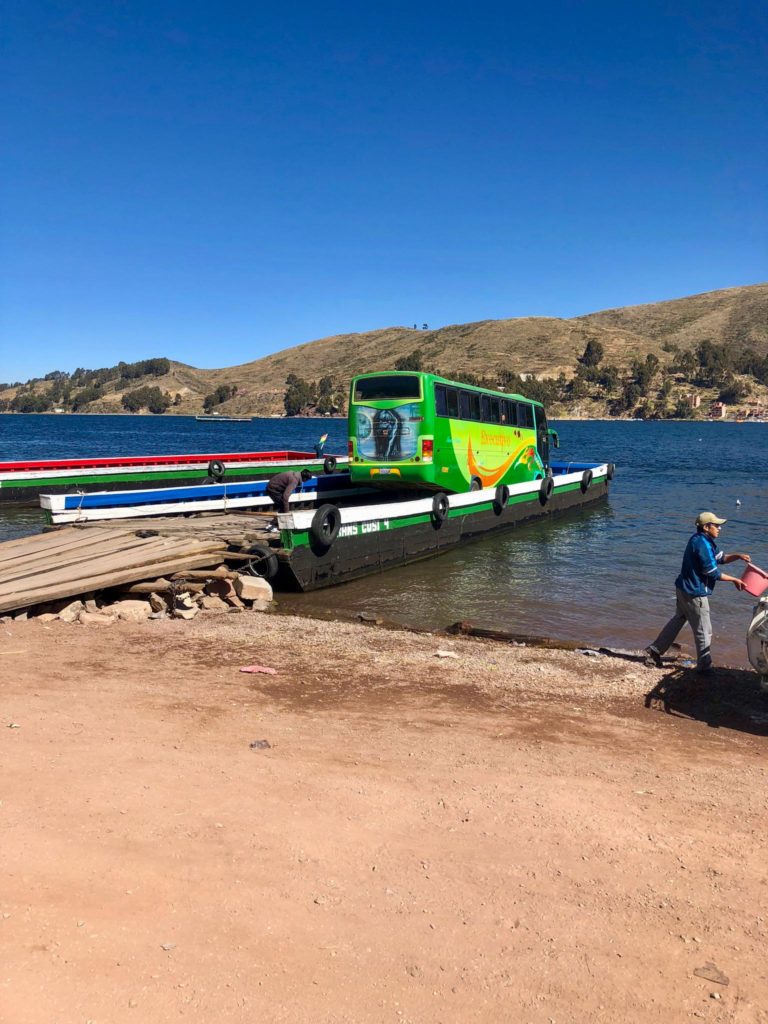
Where to stay in Copacabana, Bolivia
Copacabana is tiny. When you get there, you will have everything within a 15-minute radius. Honestly, it doesn’t really matter where you stay, it all depends on your budget. You can find places as cheap as $5 a night or as pricey as $60. I stayed at a known hotel with a middle price range, La Cupula. It was beautiful, comfortable, and warm. I loved it and I would highly recommend it. Cupulas neighbor, the funky Hostal Las Olas is higher in price but if you have the budget, it’s a super cool place to stay in.



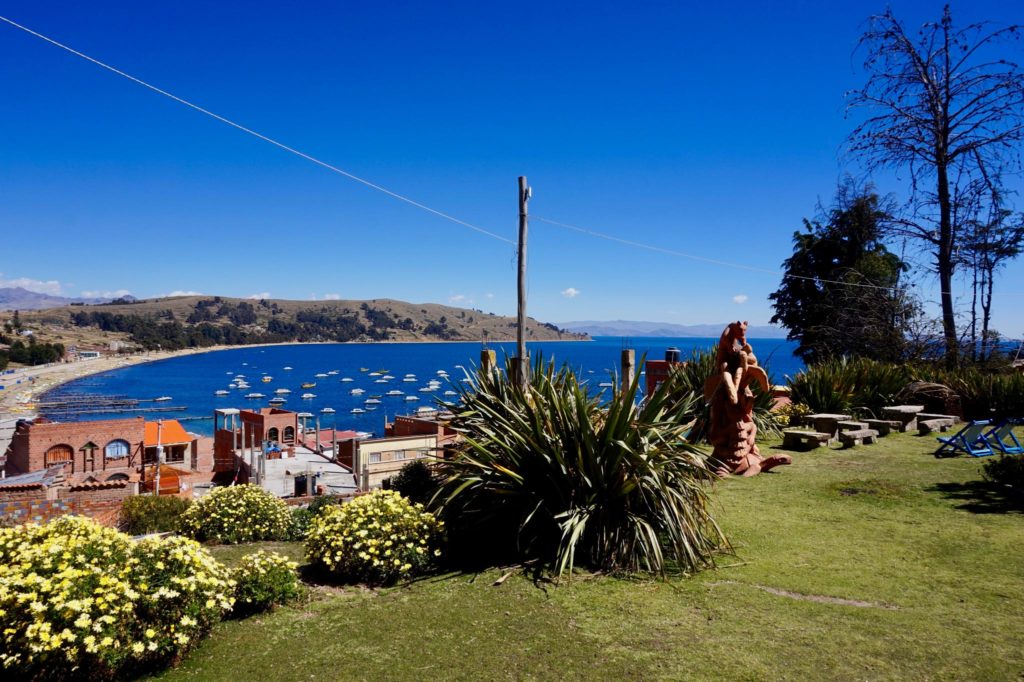
A lot of people choose to take a day trip to Isla del Sol from Copacabana as there isn’t that much to do on the island but I highly recommend staying a night there instead. It becomes a very different experience and you can soak in the beauty of the island without being rushed. Your hikes won’t be limited, you’ll get to see the most incredible stars at night and you won’t have to worry about missing the boat.
Similar to Copacabana, your stay will largely depend on your budget. I choose a pricer option, Hostal Jallalla because I wanted the views and a place with heat. I was also staying at cheap hostels for the rest of my trip so I figured splurging a little was worth it. Note, that the island can get chilly at night and not all the places provide heaters. The place was incredible but if you don’t want to spend the money, my only suggestion is to find a hostel as high up as you can. The main highlight of the island is Lake Titicaca’s views so don’t choose a place that deprives you of them.
Note: There are constant conflicts between the north and south side of the island, with the north frequently closing tourist access. Make sure to find relevant information before you leave to avoid surprises upon arrival. That’s why I recommend staying in the south part, in the village of Yumani.
People & Safety
Copacabana has mixed safety reviews. For the most part, people don’t have bad experiences and feel safe. I felt safe myself too. However, there are some tales of theft or scams but I honestly don’t think it’s any worse than your average travel threat. The one scam that comes up over and over is ATM machines eating your cards. That is exactly what happened to my travel companion upon arrival in the city. We thought this was the end of the card especially when the teller said the person that can get it, is out for lunch. However, to our surprise when we returned later in the day, the card was waiting for us. Turns out, the guy really went to enjoy some lunch…
Isla del Sol is filled with locals. There are a few tourists that stick out like sore thumbs wandering the island. I wouldn’t be too concerned about your safety there. However, when you’re hiking in remote areas, make sure to understand that the farms are the property of the people that live there. Unless you have permission or there is a sign allowing you to enter, do not wander into someone’s alpaca farm.
Most Bolivians are extremely nice and welcoming people. Embrace that but don’t go blindly trusting everyone that approaches you.
Food
Copacabana has a stretch of touristy restaurants along the main street of Av 6. The food isn’t horrible but also not very authentic. Go down to the port and have a local trout at one of the kiosks there. It’s a local specialty and I bet you that it tastes 10x better than at most restaurants in town.
Isla del Sol has family-run spots all over the tiny town. The best part is eating on top of the hill overlooking the lake. Try a couple to support the locals. For a navigational point lookup Pachamama.
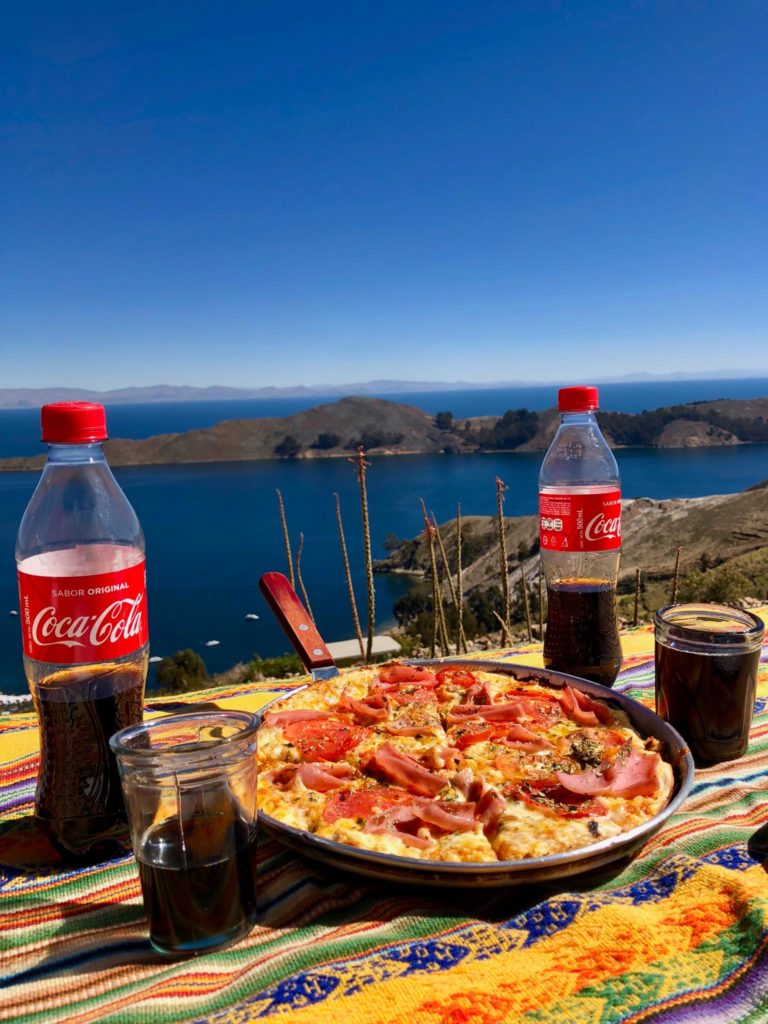

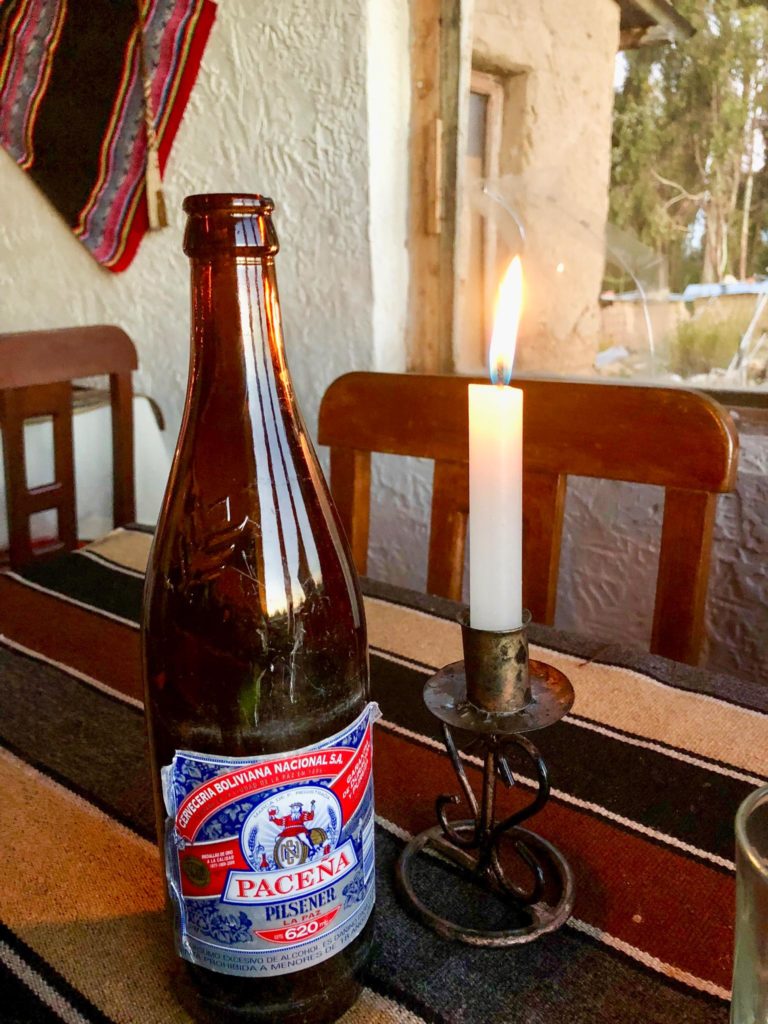

Sightseeing
There isn’t an abundance of things to do in either of these spots but the spots themselves are worth making the journey. You’re meant to disconnect and enjoy the amazing scenery of both. My favorite part of Isla del Sol was stopping and listening to how quiet it was. Connecting with mother nature and allowing yourself to pause is the best thing you can do there.
Check out a couple of things you can do in each city in the list below.
Perfect Things To Do in Copacabana, Bolivia
Let’s not lie to ourselves, Copacabana doesn’t have many things to do. You’re likely not blending in as a local or finding things that are “off the beaten path”. So embrace being a visitor and don’t put on the “too cool to buy a fluffy alpaca” act.
Walk along Avenida 6 de Agosto to the “Port”
Being the main touristy street of town, on Avenida 6 de Agosto, you will find a ton of little shops, bars, and restaurants full of gringos. It’s cute, you can make friends with the tourists and enjoy a couple of beers in actually nicely decorated places.
When you reach the “port” or the dirt road from which the boats leave to the surrounding islands, you can observe the locals fishing, kids playing, and tourists buying shuttle tickets. What I do recommend, however, is grabbing the local delicacy or the trout along with a cold Paceña, in one of the kiosks. It’s one of those must-dos on your trip there and it’s much better than the one you can get in town.
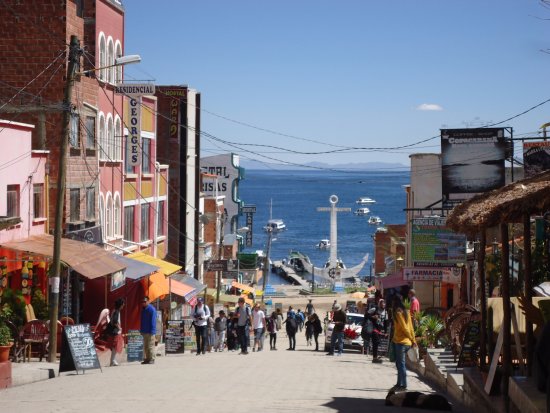

Cerro Calvario
Technically this is a sacred place dedicated to a pilgrimage but many tourists simply enjoy the hike there. At the top, you will find the stations of the cross statues which are celebrated around Easter time. It will give you the best views of the town from above. Locals and tourists both visit the site and it will take about 30 minutes to get to the top. Unfortunately, I was battling altitude sickness that day so I didn’t get to watch the sunset from it as I really wanted to. Oh, yea, a 30-minute hike at almost 13,000 feet isn’t your typical stroll.
Basilica of Our Lady of Copacabana


This is a beautiful white colonial church that you should visit despite what religion you believe in. It’s an important spot in Bolivia and many people come to see it through a pilgrimage. Also, it is sacred to both Catholics and the indigenous people due to its Inca importance.
Every day around 10 am, highly decorated cars pass through a blessing drive-thru for safety. The blessing is done by a catholic priest as well as a witch doctor. The car owner often finishes the blessing with a beer or coca-cola, for Pachamama of course.
Another thing you can find near the church is market stalls. Bolivian ladies sell anything from candy, toys, and tourist trinkets. It’s the closest to “local” as you will get in this area.
Horca del Inca
Back in the day, like Inca back in the day, this used to be an astronomical observatory. Rock structures used to be positioned to the sun, moon, and other structures. Today, only a couple of them remain after the ruthless Europeans decided to destroy a bunch of them after invading Bolivia.
It’s a difficult hike and only those that are fit and acclimated to the altitude should attempt it. However, the views will be amazing from there and the spot should be less crowded compared to Calvary Hill. If you’re interested, read this brief history about it in a very informative and well-written article from the Temple Trail here.
If you really want to see some ruins but aren’t fit enough to make this climb, try going to Intikala El Asiento del Inca instead. It’s close and accessing it is a lot easier.
Hike to Yampupata (or back to Copacabana)
Another cool (but much longer) hike can be done from or to the village of Yampupata. A lot of hikers opt to take an 80 boliviano/35-minute taxi ride to the village and then hiking back to Copacabana along the shore of Lake Titicaca. It’s a good activity if you have some extra time in the city and want to warm up for your Isla del Sol treks. You can do it both ways too but you have to be in really good shape. Again, Copacabana’s altitude is a killer, and things that are normally easy, become extremely strenuous on a person who doesn’t live in these types of conditions.
Islas Flotantes
Along the hike from Yampupata, you can encounter little floating islands close to Copacabana. They’re small and not as impressive as Peru’s islands and I don’t know if I would specifically make a trip out of town just to see them. But there is a bunch of tours organized from town that let you hike around and enjoy this unique activity so if you always wanted to see one and don’t have time for the Peruvian ones, take a short boat ride there.
Perfect Things To Do in Isla del Sol, Bolivia
To get to Isla del Sol from Copacabana, you will need to take a boat at 8:30 am or 1:30 pm from the boat dock in town for about $3. Make sure to get to the dock 30 minutes earlier and buy tickets there to save yourself some money because the ones that you will buy in town are a lot pricer. You can technically come back the same day because the boats come back at 3:30 and 4 pm but I wouldn’t really recommend that.




Useful Tips:
- If you’re going there for the night, store your main luggage at the hotel and only bring what you need for the day. You’ll save yourself the headache of carrying huge packs.
- Always triple-check the times of the boats. I missed mine by 30 minutes.
- If you miss the boat and you’re lucky, there are some private boats that can take you there but you will pay a shit ton more. I had to opt out for this option because my dumb self thought the boat runs between not at 8:30 and 1:30 …
- If the waters are choppy, you won’t be able to make the trip there.
- There are no ATMs on the island so take all the cash that you think you will spend. I had to loan money to a fellow traveler because they had no way of getting back to town.
- There may or may not be wi-fi there.
- North and the southern parts of the island always seem to be in conflict so there is a chance your plans might not work out if you wanted to see both sides. For the most part, the Yumani area seems to be always open, it’s the north that likes to close off access to tourists.
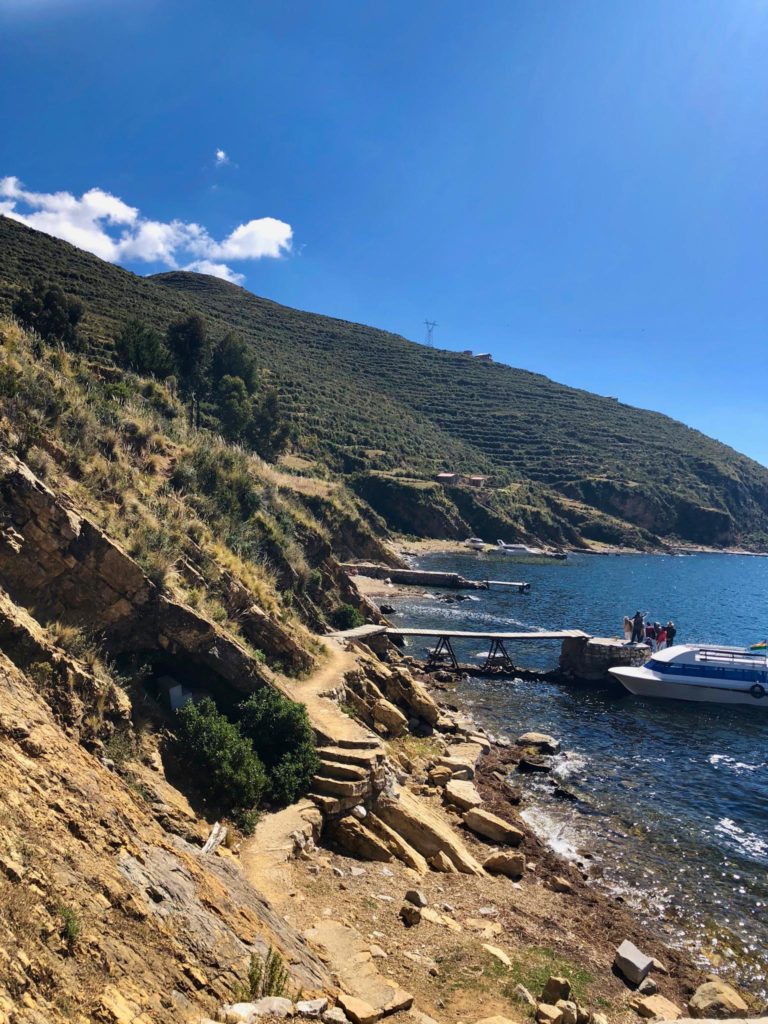

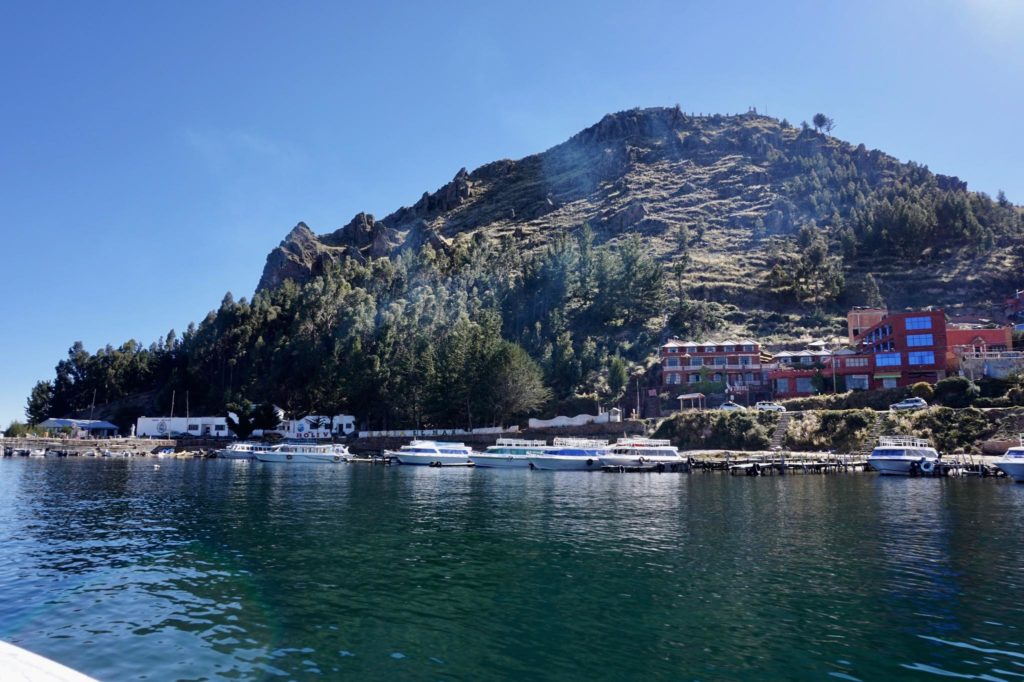

Hike hike hike
The reason why you came to Isla del Sol was for the views, sunsets, and untouched territory. There are no cars on the island so guess what? You are walking my friend. And you’re walking a lot, so make sure you’re acclimated as you’re at the highest lake in the world.
If the north and the south aren’t fighting, take the north-to-south route hike on the Willa Thaki Trail. Assuming it’s open, your boat can drop you off in the north part which is the Challapampa community, and then you can start your walk to Yumani which should take you 2-3 hours. If closed, you’ll get dropped off in the south, and you can loop that trail, one way in the middle of the island, the other on the coast.
Everything is marked and there aren’t any alternatives so you will have no problem following the route. Along the route, there is a bunch of ruins that I marked on the Bolivia map for you but I know nothing about them aside from that they’re old and important.
If the north is fighting with the south, you can still get killer views on the tiny south stretch. Walk to Mirador Palla Khasa for great views.
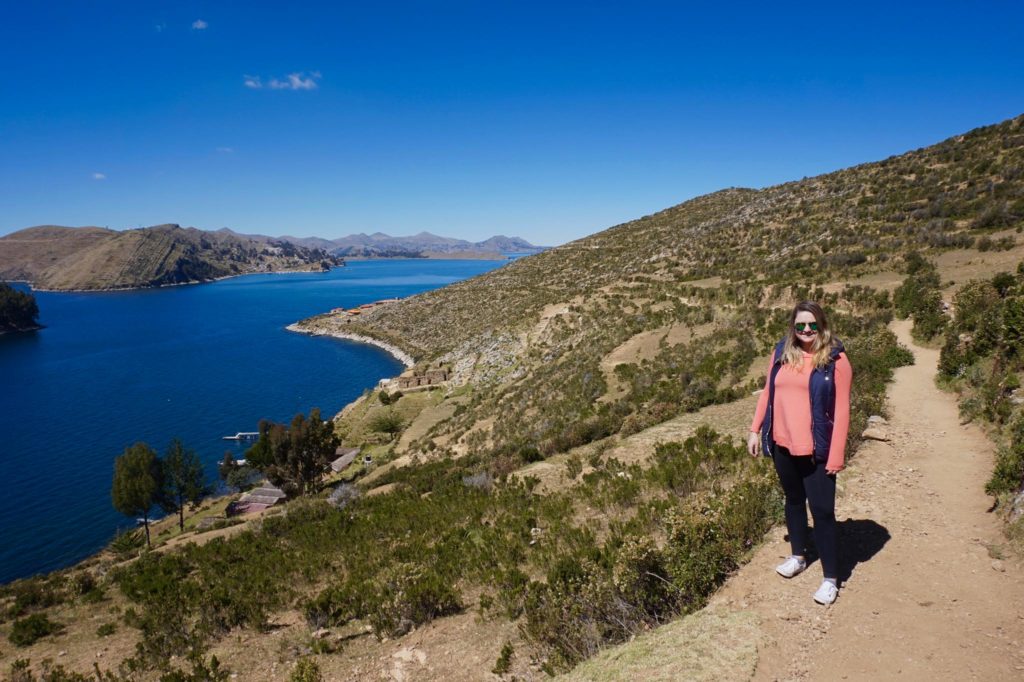

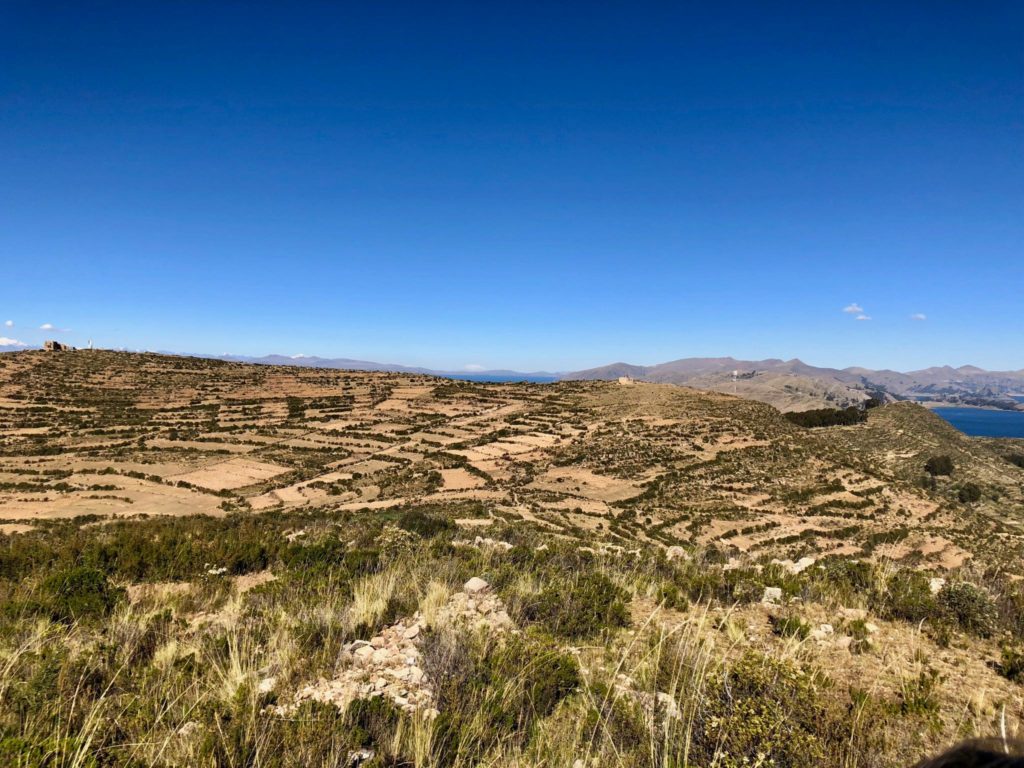

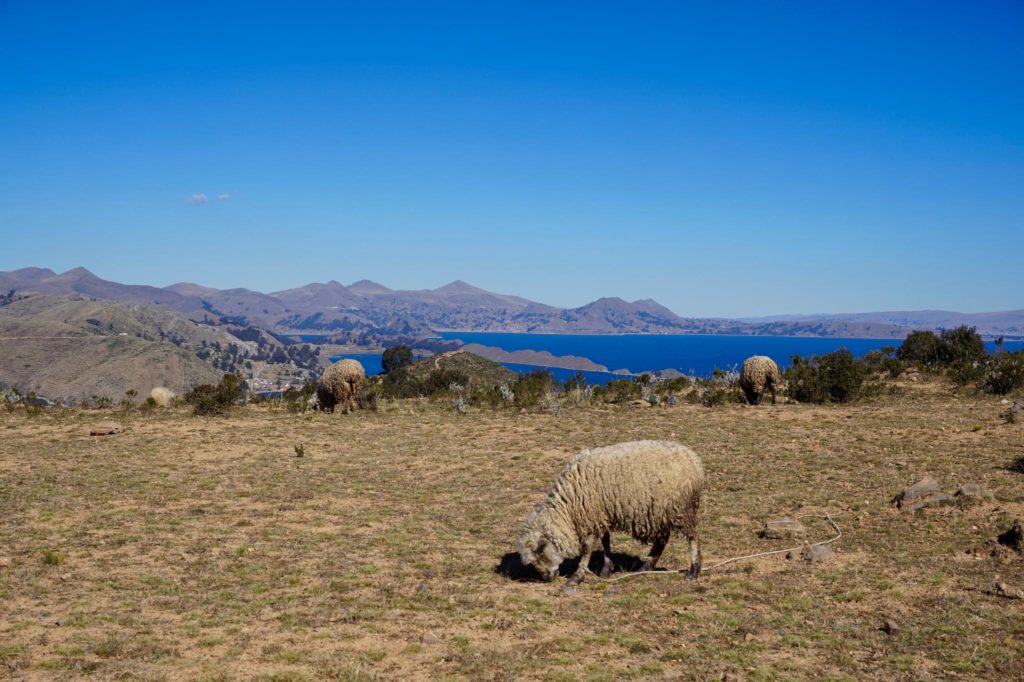



Sunset and Sunrise
I saw a couple of famous sunset spots in the world, and all I have to tell you is that they have nothing on the Isla del Sol views. This is the main reason why you should stay on the island for the night. Stay in Yumani but on the hill so you can comfortably grab a glass of wine or a cold Paceña and just silently soak in this beauty.
Oh, and you know the best part? After the sun goes down, the stars are SO bright they were the best ones I have ever seen in my life. Better than in the Uyuni desert or Mount Teide in Tenerife. Stargazing is even better than the sunset.
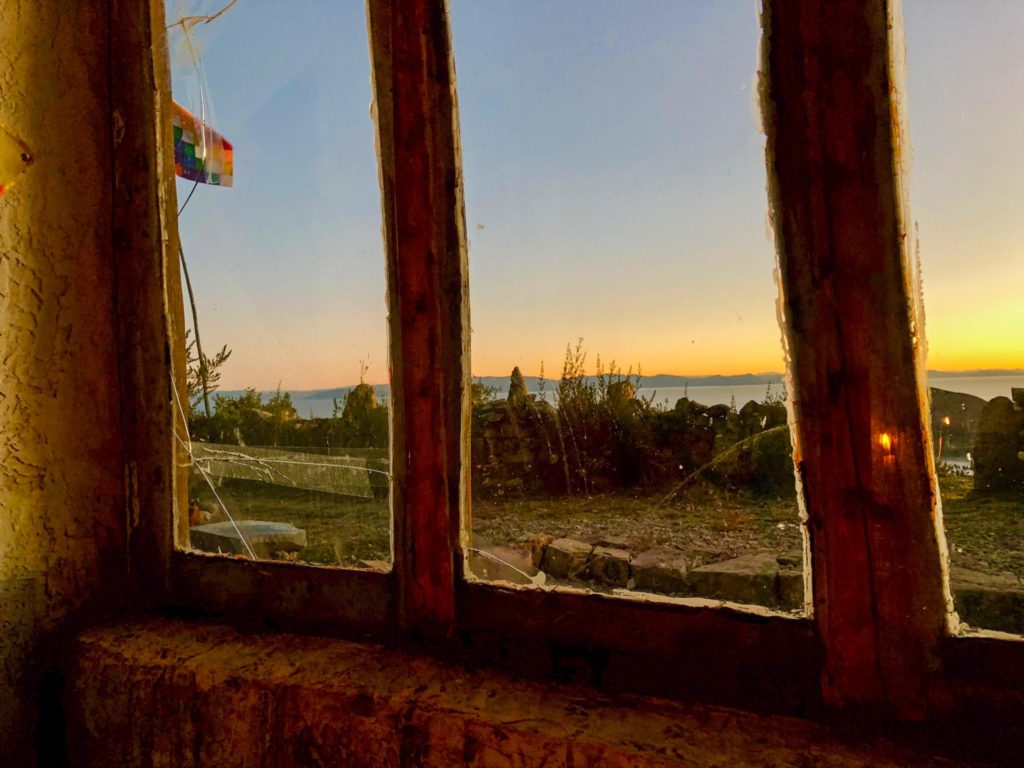



Inca Stairs
When you’re taking the boat back to Copacabana, you won’t be able to avoid the 200+ Inca Stairs. They’re beautiful but at that altitude, any physical activity is a huge pain. I wasn’t happy and the amount of mud there didn’t make this any easier on me. But the whole walk is surrounded by flowers and beautiful trees so it’s worth the pain. Spot the Fountain of Youth along the way. They bring you to the dock which is pretty too.
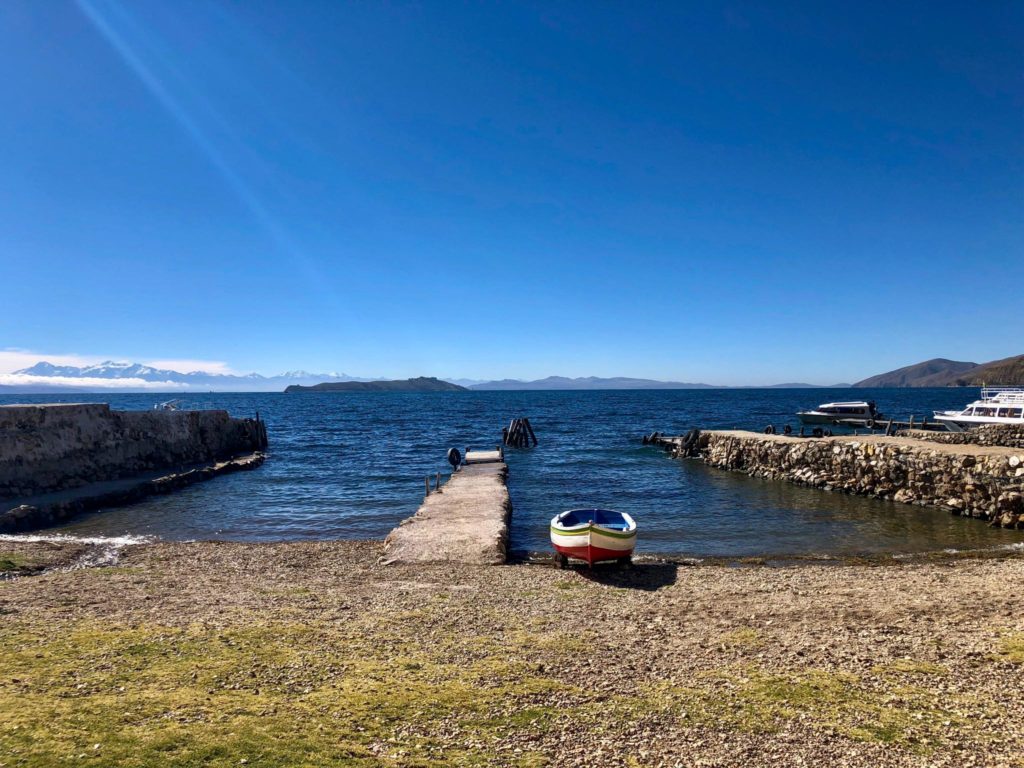

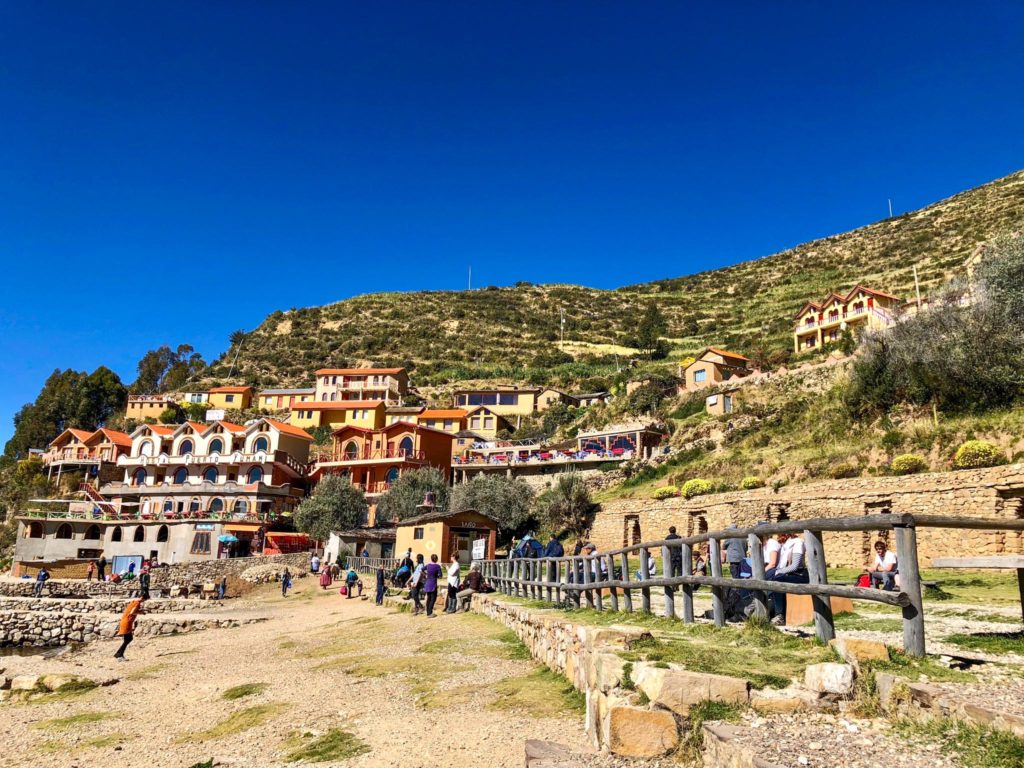

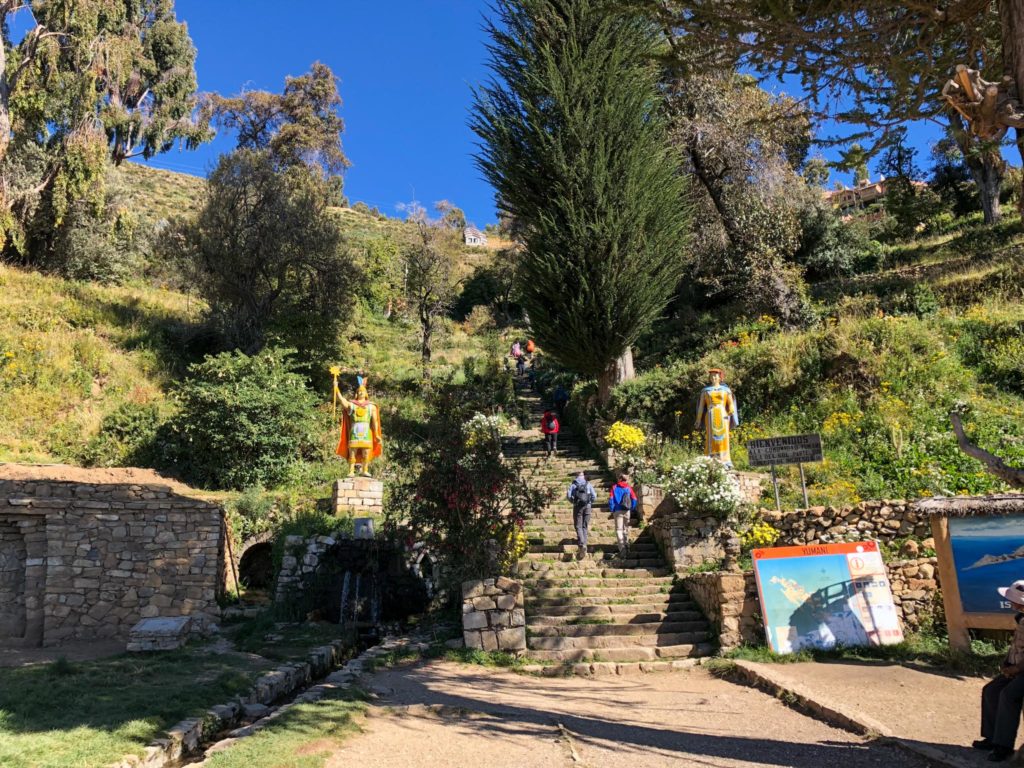

Las Velas
This was the highlight of the trip for me. Las Velas is a candlelit restaurant in the middle of the woods serving dinner at one time per night. The walk there is very scenic too. We arrived there a little early so we got to enjoy some beers on a cliff along with a great sunset.
The chef cooks everything from scratch as the whole restaurant waits. You can enjoy beers and board games as you will probably wait for over 2 hours. Is it worth it? A million times yes. The whole experience of disconnecting and just enjoying sitting collectively with other travelers while someone cooks a gourmet meal for you is incredible. At the end of the night, he made a little speech and every guest applauded him.
Then we walked back to the hotel in pitch dark through the woods. The stars were extremely bright and I didn’t even want to use a flashlight. I would say that this entire evening was one of the top travel experiences of my travel life.
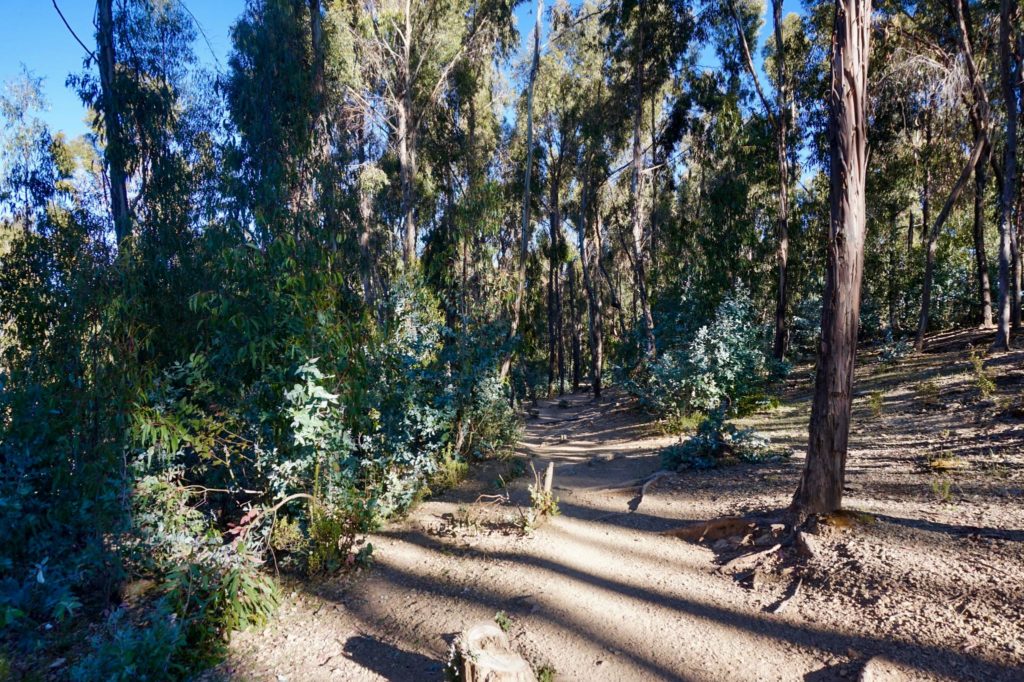





Speaking of restaurants … EAT
Go to the top of the hill in Yumani around the restaurant Pachamama. You will have a meal with the most beautiful backdrop of the lake. Try to eat a couple of places as they’re all family-run. You can also go closer to the docks where you will find even more places.
Unwind, relax and stay the night
Traveling to Bolivia is hectic. You always have to plan and be prepared for everything ahead. A lot of your trips are arranged where you’re on a constant schedule. La Paz is a whole other story. It’s wild and loud and scary at times. Isla del Sol is everything but that. I frequently stopped while walking to just simply soak in the silence.
If you take a day trip, you will be rushing and stressing to get back to your boat and miss the most important reason for visiting this place. Staying the night will allow you to see the sunset and sunrise, the stars, and also experience the island “to yourself” as the majority of the day travelers will be gone after the last ferry.
Appreciate the rawness of this place, talk to the locals and soak in this unique beauty that many travelers haven’t seen yet.
Bonus: Isla de la Luna
Ok, you’ve heard of Isla del Sol but did you know it has a little sister, Isla de la Luna? It’s much smaller, and can be reached from both, Isla del Sol and Copacabana. It is known for its famous Temple of the Virgins. Even fewer people make it there or if you’re looking for some secluded hikes, ruins, and remote places, take a boat ride there too.
Copacabana & Isla del Sol Perfect Itinerary: FREE Downloadable Guides
These two beauties go hand in hand. You can’t avoid Copacabana when visiting Isla del Sol and vice-versa. For that reason, I planned the best-combined visit for your trip. All my itineraries were made after I traveled to a destination so they are optimized for things I wish I did differently. I hope that my mistakes could help you avoid any bumps in the road. However, if you feel like some plans can be even more perfect, please let me know in the comments below!



Two-Day Perfect Itinerary
For your two-day plan, I start with the transport to Copacabana. Then you will explore this tiny city on foot for the major tourist highlights. After that, you will be able to climb a hill for the best sunset views and end your day with a perfect dinner. On the second day, you will wake up early to head to Isla del Sol located on Lake Titicaca. You will relax, hike and spend the night there, enjoying everything the island has to offer.
Three-Day Perfect Itinerary
Although technically not necessary, I like the three-day option for a slow enjoyment of life. This plan includes a day in Copacabana on day one, a trip to Isla del Sol on day two, and then back for another half a day in Copacabana. Alternatively, you can spend two days on the island and just one in town, stretching out the activities I suggest in that plan.
On day one, you will explore the town, climb a beautiful hill and have a tasty dinner. Then on day two, you will head to the island to explore it but more importantly, just to simply enjoy its beauty. On day three, you will spend one more night in Copacabana hiking or relaxing. For the night, I suggest a local Discoteca for some dancing and drinks.
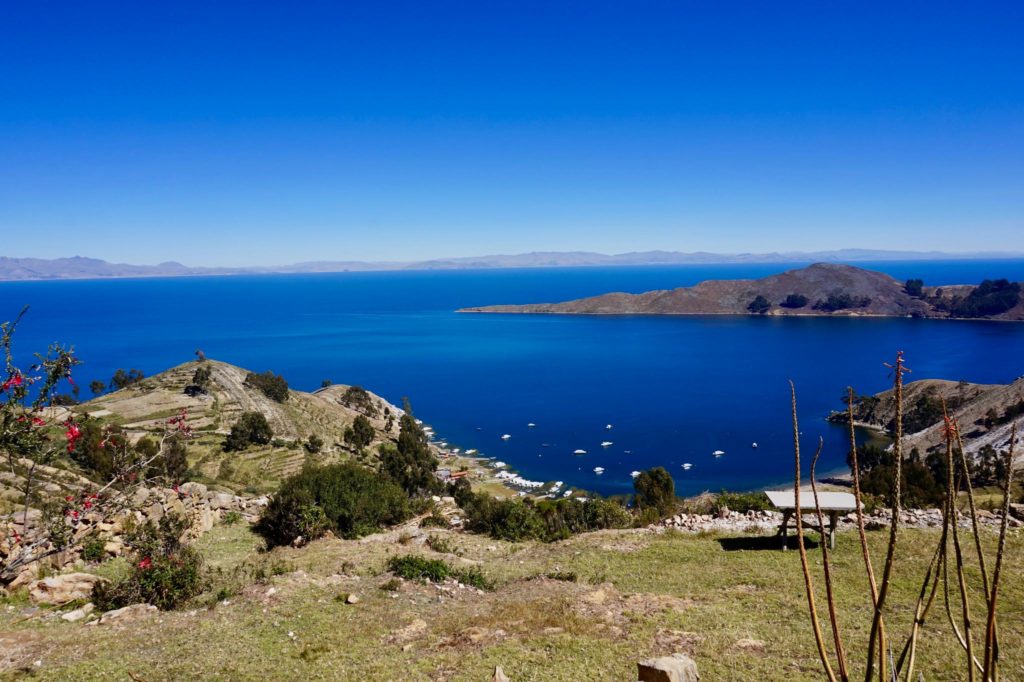

More Bolivia itineraries
A tour through the Bolivian Salt Flats – One of the most beautiful places on this planet
The Bolivia Salt Flats or Salar de Uyuni is one of the most incredible places I have ever visited in my life. Spending three days in the middle of nowhere, surrounded by this world’s stunning nature, made my travel soul super full. Like most people, I started my Bolivian Salt Flats tour from Uyuni. Bolivia…
Things To Do In Sucre Bolivia & An Awesome Downloadable Itinerary
It’s truly a rare event to meet a traveler that has disliked Sucre. On my three-week Bolivia trip, one of the most unexpected surprises was visiting Sucre. I instantly fell in love with the atmosphere of the city and deeply regretted not staying longer. Sucre is the capital of Bolivia although you will often hear…
Continue Reading Things To Do In Sucre Bolivia & An Awesome Downloadable Itinerary
La Paz Itinerary: The Highest City In The World
La Paz intimidated me at first due to its not-so-hot reputation. I didn’t know what to expect, whether I’d feel safe and how the altitude would affect me after what I experienced in Peru. Having found many warnings for this destination, my nerves were pretty heightened for this trip despite being a not-so-nervous traveler, to…
Continue Reading La Paz Itinerary: The Highest City In The World


